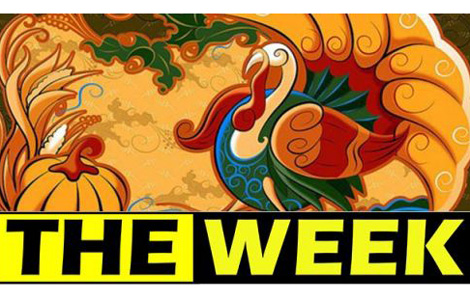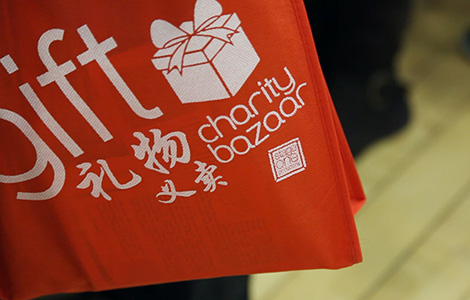Testing time for China's tea growers
Updated: 2013-12-02 00:08
(China Daily)
|
|||||||||||
Chinese producers take the less traveled road in Africa and Europe for sustained growth, as Todd Balazovic and Li Aoxue report.
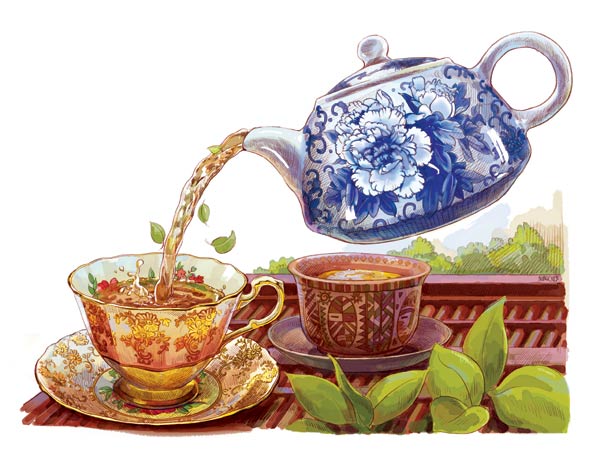 |
|
Song Chen / China Daily |
What started 5,000 years ago with a haphazard gust of wind dropping foliage into the boiling pot of a wandering Chinese emperor has brewed into a cultural cornerstone worth billions in any currency.
China may be the world's largest tea producer — growing about 2 million tons annually — but international demand for leaves from the country best known for its exports is a fraction of what it produces, with most of the quality product sold domestically.
Although it accounts for more than 40 percent of the tea produced in the world every year, China exports a tiny fraction of the annual crop yield.
Tea producers from countries such as Kenya, India and Sri Lanka dominate the global export market, producing mid- to low-quality teas for mass consumption in the US and Europe.
The reason for China's small portion of the pot is simple — for Western drinkers unaccustomed to the sophisticated process of fine tea appreciation, the price tag of Chinese tea is too steep.
"There is a culture behind Chinese tea that is not found in the West," said Li Zongjian, founder of Lijiang-based tea producer Li Liang Xi, at the recent China Tea Expo in Beijing.
Li, who earned his degree studying the ceremony, growing process and health benefits of tea, says much more goes into Chinese tea than simply creating and consuming.
Perched on a bamboo stool before a meticulously carved wooden serving table, Li is eager to prove his point, theatrically clinking together heated cups as he prepares for a Chinese tea ceremony.
Carefully pinching a dark chunk of Pu'er tea, fermented black tea leaves made famous by China's southern Yunnan province, he holds them under his nose, inhaling deeply.
With a look of satisfaction, he begins preparing the leaves in the way most of the Western world is familiar — boil water, add tea.
But before the brewing process is complete, Li dumps the entire pot of $150 tea into a hidden drain on his serving table — evoking the obvious question "What was the reason for that?"
The first boil only works to awaken the tea leaf, he explains.
This takes place two more times before he serves what he has deemed an appropriate cup of tea according to the gongfucha serving method he spent years perfecting.
"When Chinese people drink tea, they don't consume it like a product. We have tea as a part of our culture, so the standard is high," Li says, continuing his showmanship with an exaggerated sip from the steaming glass.
"For Westerners, it's simply a beverage."
Although it's hard to put a price on culture, Li can sell 100 grams of his hand-picked teas for between $100 and $1,500, depending on the age of the leaves and method by which they were grown — compared with $28 for the same quantity of popular UK tea brand Twinings.
Auction power
While finding someone willing to pay up to four times the price for a block of tea may be difficult, one auction house in Africa has answered the call of tea aficionados from across the globe.
The Mombasa Tea Auction house is one of the most famous in the world, selling teas from across the continent to buyers in the US, Europe and Asia, supplying to big names such as Lipton in a traditional live auction format.
Facing the opposite problem as China — Kenya is the third-largest producer of tea globally, with very little demand domestically — the auction house is now revamping the process to allow international bidders the chance to take part in an e-auction.
The plan is designed to expand the reach of the world's largest tea auction house, matching distributors with buyers at a price both can agree on.
While Western consumers may be perceived as having a less-sophisticated view of tea drinking, the US and Europe are mass consumers — with US citizens alone sipping more than 79 billion servings in 2012, according to statistics from the Tea Association of the USA.
They help fuel an international tea market worth more than $30 billion a year worldwide.
But unlike in China, where tea is the center of many social functions, from gatherings with friends to traditional marriage ceremonies, Americans and Europeans often view it as a cheaper, easy alternative to coffee.
More than 50 percent of the $10 billion annual tea sales in the US last year were ready-to-drink beverages. The pre-prepared bottled tea drinks selling for $1 to $2 a bottle in US grocery stores accounted for $4.8 billion in sales, according to numbers from the Tea Association of the USA.
It was the flourishing success of on-the-go drinks in the US that pushed drinks giant the Coca-Cola to phase out an agreement with Nestle's Nestea last year, instead refocusing efforts to capitalize on the trend in Europe, where traditional teabags still dominate the market.
One report, by research company MarketsandMarkets, estimates that by 2017, ready-to-drink tea and coffee sales will make up a $125 billion global industry.
Market dynamics
But while ready-to-drink sales may be on a quick rise, something has been lost in the bustling consumption, says tea enthusiast Par Carlson.
"We need to learn the slow process of drinking tea. In Europe it is mostly coffee and quick consumption," he says.
One of just a handful of non-Chinese attendees at the China Tea Expo, the 49-year-old Swede stands surveying a row of sweet-smelling black teas from Fujian province, occasionally picking up a handful to take in the aroma. Approached by a salesperson, he eyes the price tag before waving his hand, dismissing any thoughts of a potential sale.
"It's hard to put a price range on what I would pay, but this is too much," he says, refocusing his attention on a bushel of Pu'er.
Visiting extended family in Beijing, Carlson is one of a small percentage of Europeans who take a more in-depth view on drinking tea. He says in Sweden his local teashop sells 100 grams of Chinese Pu'er tea for a quarter of the price.
The reason for such a price gap, says David Duckler, president and founder of US-based Verdant Tea, is because the cost of famous brands and teas grown in recognized regions is driven up by huge domestic demand.
Dispelling the notion that Chinese tea is too expensive, the 26-year-old American's Minnesota-based teahouse sells a variety of high-quality teas, sourced directly from farmers for less than $5 a cup — the equivalent of an average coffee at Starbucks.
"Whenever possible, we try to source from regions or farmers who are doing high-quality work but are not yet famous," he says.
"This allows us to present the best value to American customers by providing high-quality tea at more affordable prices and not affected by the high domestic demand."
Establishing contact with farming families while working as a Fulbright Foundation scholar to examine tea in China in more depth, Duckler says the reason for the lackluster interest in fine teas is simply because of a scarcity of information.
"The Western market is full of young professionals excited to spend money on Scotch whisky, wine and coffee. Tea companies in America have simply never given Americans a reason to spend more than what tea bags cost at the grocery store," he says.
"When an American customer spends money on coffee or Scotch, they expect to know when and where it was produced, how much was produced and whether flavor, texture and aftertaste make it worth the money.
"Tea sellers in America usually focus on health benefits, but not much is said about taste. Even less is said about the origins of the tea."
Starting Verdant as an online distributor, Duckler eventually opened a small tearoom to attract customers who wouldn't otherwise seek out his products.
His tearoom, complete with carved wooden tables sporting hidden drains, seems more at home in a city such as Shanghai or Guangzhou than in the cold northern state of Minnesota.
But it is transplanting that piece of Chinese culture in America that captured his interest while living in China that pushed Duckler and his wife to create Verdant.
Preparing tea in the gongfucha fashion and holding tea tasting daily, Verdant has become a cultural beacon in the local community.
"Our strategy is to make sure that the Chinese tea ceremony is approachable," he says.
"By showing people how easy and fun tea can be instead of making it seem strange and foreign, we are helping Americans embrace this important piece of Chinese culture and connect with farmers and growing regions."
While Verdant may be gaining the attention of locals, supply of his 25 teas is seasonal and the quantity is limited, so expansion will be slow, he says.
Quality issues
Limited supply chains and tough customs inspections are the major roadblocks for Chinese high-end tea growers who have their eyes on shifting their products abroad.
Gao Cheng, managing director at Heimeiren Tea Ltd Co, says while his teas might meet the quality standards in China, often stringent policies in Europe and the US prevent shipments from ever leaving the country.
"But with enough people in China demanding our products, there's no real need to ship outside China."
At the beginning of the year, Japanese food producer Ito En recalled more than 400,000 packages of China-produced Oolong tea after it failed to meet the nation's pesticide residue standards.
Incidents like these hurt the international reputation of Chinese tea, says Chris Yang Hanjun, CEO and founder of international online tea distributor TeaVivre.
"We think this is the top reason that has so far inhibited the development of Chinese tea in the international market," he says.
Yang, who started TeaVivre in 2010 after noticing there were no famous international tea companies specifically branding Chinese tea, says that for someone trying to establish a name, ensuring quality is the biggest barrier.
In addition to inviting closer scrutiny from customs officials, it pushes tea aficionados to look elsewhere to get their fix. Yang says he tests the tea quality several times before putting it on offer, something that many mass producers often overlook, because it means the difference between success and failure.
"The premise of much of our testing is that the tea meets the low pesticide residue requirements in the US and Europe," he says. "It is the most important factor."
But Yang reiterates that creating a culture that looks to appreciate tea, viewing it beyond just a convenient afternoon pick-me-up, is crucial to creating the demand that will have Chinese producers ensuring their products meet international shipment standards.
This was the precise aim of Chas Kroll when he initiated the American Tea Masters Association in 2007.
Having spent more than a decade sourcing specialty teas from Johannesburg to Jiangxi, Kroll identified the need for the training and education of tea masters in the US.
"At the time there was only one organization in the US that was doing any training — and looking at their curriculum it was really inadequate," he says.
Kroll applied his expertise of tea tasting acquired from his years as a supplier and many similar techniques found in wine tasting, to create a curriculum that certifies enthusiasts as tea masters.
So far, Kroll has certified more than 300 people internationally — from Germany, to Australia and the US — as qualified American Tea Masters. With certification costing $2,975, it may be a while before any but the most ardent tea lovers partake — but for Kroll that's a good thing.
"We really are aiming to work with people who are willing to dedicate a good amount of time in appreciating good teas," he says.
"As a tea master, it's not just about getting certified. It's about the ongoing process of pursuing knowledge about tea."
While American Tea Masters may become certified in a matter of months, Li of Li Liang Xia tea, who spent years studying the complexities of the tea leaf says the process is not so simple.
"We cannot simply say let's promote Chinese tea to the world, because it is a culture; it is not something that can be easily learned by foreigners," he says.
"Even for Chinese people, it takes five or six years for them to understand the intricacies of tea culture.
"But we could use tea as a platform, to let more foreigners understand Chinese culture."
Until then, growers like Li are happy to continue selling to the domestic market, where Chinese buyers, appreciating the cultural heritage of the product they're buying, are willing to spend more money.
Related Stories
Time for tea 2013-11-29 14:44
More should be done to spread tea aroma 2013-11-29 14:44
Fuding savors success in white tea 2013-11-15 09:13
How to make white tea 2013-11-15 07:41
China Int'l Tea Expo kicks off in S China's Nanning 2013-11-11 14:39
Qingdao Autumn Tea Fair kicks off 2013-11-07 10:56
Today's Top News
China launches probe and rover to moon
Cameron to come with big delegation
Testing time for China's tea growers
8 dead in police helicopter crash onto Glasgow pub
Xi stresses fight against HIV
Premier's trips bear fruit
IPOs to resume after long freeze
Li calls for better links
Hot Topics
Lunar probe , China growth forecasts, Emission rules get tougher, China seen through 'colored lens', International board,
Editor's Picks
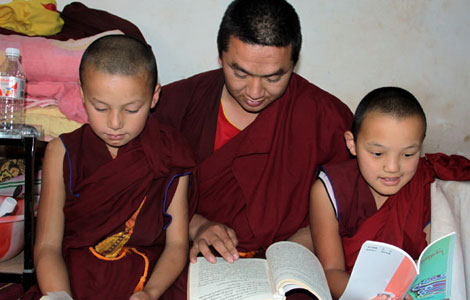
|

|

|

|

|
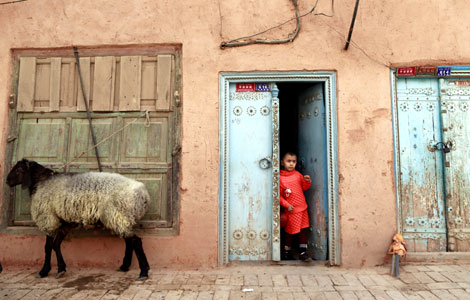
|
